Foley Research
Foley/Foley Artist research
Video 1 - Inside the Pinewood Foley Studio | BAFTA Guru
Video 2 - The Magic of Making Sound
What is Foley?
From watching the two YouTube videos above, one provided by the teacher, and the other one, "The Magic of Making Sound", which was a video I watched in a previous media task which, coincidentally, happened to be based on the same subject, and from a basic Google search for clarification, I now know that Foley is the product of an artist recreating the sounds and sound effects for any visual based content by using physical objects. Then is later implemented in during the editing process of the film/video.
Who and What is a Foley Artist?
Foley artists are the people who carry out the procedure of making the foley sounds. They handle the physical equipment to make the particular sounds for the video clip, while others handle the technical equipment, recording the sounds and editing them to fit the video. I did a brief search on Google just to clarify, but it covered everything I knew already.
How do you create Foley?
Foley artists create this foley sound by taken random pieces of equipment that they think makes the certain sound they're trying to recreate, and record themselves while playing around with these props in sync with the video clip when the sounds will happen. They record things like: footsteps, by recording themselves walking around wearing boots - the sound of flapping cloth for clothes or a blanket or a sail, as shown in one of the video above, which they create by just flapping a cloth around - and also the sound of waves, which is done by filling a small shallow pool with water and then just record themselves playing around with it with their hands.
Types/Examples of Foley?
As said above, there are probably an infinite number of ways to make a foley sound effect, they all require different props and equipment to make and record. Here are some examples of types of foley sounds:

Elements used in creating Foley?
From doing a quick search on the internet, and from a general analysis from my previous above, I found some of the main elements in creating a foley could consist of basic movement and props.
3 Specific Examples of Foley?
- 1 example of a foley is the rain sound effect, specifically the sound effect of rain drops falling off clothing. This particular foley sound effect is made by artists by lightly trickling water on a rubber/plastic object. This creates the patting sound of water droplets bouncing off clothing.
- Another example are the sound effects in a fight scene, the sounds of punching and slapping. I did some research into another YouTube video online to find this specific particular type of foley sound, Video Clip. The man in this video used a verity of soft things to punch to recreate the sound of punching and a celery to impersonate the crunching sound of bones.
- The last specific example of a foley sound effect is the sound effect of footsteps walking in snow. Personally I quite like this foley sound because of the creativity behind it, and the slight irony of it and really the irony of all foley sound. The artists repeatedly step in a pit of sand to recreate the grinding sound of snow, and they also occasionally use a bag of corn starch.
For this homework task, I had to think about what particular types of foley sounds I want to test with the props I have in my house hold.
- For my first choice, I wanted to take an empty egg shell and break it slowly whilst recording to get this satisfying ice cracking sound.
- Another idea I had in mind was filling up a bath full of water and then whilst recording, play around with the surface of the water with my hands to try and recreate the sound effect of walking in a shallow river or something like that.
- Another, simpler, idea I had had, was just taking two metal knifes and slice them together to create the specific sound effect of two swords clashing in a fight, or some sort of industrial machine with metal bashing into each other.
- One last idea I had was maybe taking a large leaf of lettuce, and whilst recording, break it to try and create the sound of breaking bones or wood.
For this task, I have to plan for a number of foley sound effects for an inaudible video that was provided to me.
First Sound Effect - Walking in Water:
At first, I wanted to recreate the sound of someone walking through a shallow lake of water. I wanted to do this by using a similar technique I saw being used in a YouTube video I used as research for my previous task, it shows a man playing his hands in a shallow bath of water to recreate the sounds of waves. YouTube Video
I wanted to use the same technique but for the sound of feet walking through water, and by using my bathtub.
The first thing I did of coarse was go to the bathroom and run the bath of water and let it run until it's about above ankle hight.
The idea was that I run my hands in the water repeatedly in a sort of vertical paddle motion, in hopes of recreating the sound of someone forcefully trying to walking their way through a river. But I realised that, as I was doing it, it sounded nothing like the sound I was trying to make, and worst still, after finishing the recording, and unplugged the bathtub, I accidentally deleted the footage, and I didn't want to waste water by running another bath, so I have no sound effect to present. Which I guess was just as well since I didn't like the outcome of the sound effect.
Second Sound Effect - Cracking Ice:
Since I didn't like the last sound effect, and I didn't have footage of the sound, I created a new foley, the sound of breaking ice or wood.
I did this by taking an empty, broken egg shell I took from someone who had just finished baking, and slowly started breaking it with my fingers.
The actual foley sound itself for the cracking egg was not too bad, it sounded a little like breaking ice. But in my opinion, listening to it actually reminds more of a camp fire than ice.
I think for a first foley test, this went ok. Next time I could perhaps plan better. As in research into a particular sound I want to make so I know what I have to use and then I could a better search in my house hold to find the prop and make a better recording with it.
Foley Sound Recording
After the pre production task, planning for the foley sounds and recording the tests, I proceeded to record the foley sounds that I planned for for the provided video clip. Then edited them in an audio based program, then, in a separate program, implemented the video footage and the edited sounds to sync the foley sound with the video to complete the whole task.
Sound Recording
I used my iPhone to record the sounds, after which I uploaded them onto my laptop to edit.
The process of recording the sounds and trying to recreate them with the props I had was actually quite easy to do.
During the process, there were some foley sounds that were a bit trickier to create and required me to redo them again a couple of times to get, what I felt like was the closest sound recording to what I was aiming for. As shown in the examples below.
For these sound recordings, I used the inaudible video as reference when making it. I had it up on my laptop next to me so I can better sync the foley sounds I make as the video plays. Like the foley sounds below when I have to pour the water into the cups, as shown in the example above, and when to time the footsteps.
When I was recording some other sound, I wasn't sure about the outcome of the recorded sounds, so I improvised with them and tried to test with different props or in different areas of recording space.
For example, the last foley sound, which I planned to use a leaf of cabbage/lettuce or a carrot stick, but the leaf didn't give off the sound I was looking for, and I didn't have a carrot. So I decided to use the same technique I used for my Foley Test by using an eggshell as I thought it made a good cracking sound when I recorded it last time.
Also for the splash sounds I made with the bathtub and the cup of water, my initial plan was to just record the sound of the water splashing on the wall above the bath but even though the sound it gave off was probably probably accurate to real life, it didn't satisfy me. So I tested with different areas in the bath until I got a sound that to me sounded good enough.
The same also goes to first foley sound I recorded, with the hammer and the pillow. Hitting the hammer on the pillow sounded to muted and didn't have enough impact to it, so I tested with the couch arm rest instead that had a sturdier surface and in tern produced a harder and loader foley sound.
During the procedure where I was editing the audio to the video clip, I realised I had not included a particular foley sound in the video (the part where cat comes out from the door making a door opening sound) in my pre planning. So half way through editing, I took my iPhone and record the sound of my self opening any door in my house hold, and also record the sound of myself hitting a particular wooden door in my house to recreate the sound of the door in the video bashing against the wall as it swings.
After, I put the audio files into Audition to edit them quickly, and then put them into editing the video so I could sync the door sounds.
Sound Editing - Adobe Audition
After the audio/videos were captured, I imported them into Adobe Audition (which was suggested by the teacher) one by one to edit them, to a certain extent.
The program itself was pretty easy to use and operate, especially after watching this video provided by the teacher, Audition Tutorial, which also taught me how to use the some of the features on the program that I added to my audio files (like Multiband Compressor & Parametric Equaliser). Some other parts, other features on the program were harder to find. For some audio files, I wanted to stretch them out to make them slow down and last longer, so I had to do some research on the internet to find out how to do this particular feature.
The first result I found on the internet didn't help me a whole much. I couldn't seem to find the features on the program. I then clicked the link under the info which brought me to another page saying the same thing. So I continued searching on the internet.
As I scrolled down the same page as the search shown above and I clicked on the first YouTube tutorial that the page presented to me. I found the tutorial useful as it taught me how to do the feature I was looking for on the program.
After I picked up the info from the tutorial, I was able to operate the programs feature easily and alter my audio to my liking.
This use of the new feature led to another small problem, in terms of exporting the audio file. It didn't allow me to export the file as it had for the previous audio files, so I did some more quick research and the first solution provided to me was to put to file into a separate program called Adobe Media Encoder, which is a program I am familiar with. It is a program that I tried to use for exporting my After Effects project in a previous task, and, for me, it was difficult to use and didn't do the things I was expected it to do, so I was a bit sceptical to use it again for this project.
After all the audio files were edited to my liking, I proceeded to collect them all and put them into a file which I then put into my google drive. After that, I took all the files and proceeded to put them into editing with the inaudible video to sync audio and the video together.
For editing the audio and the video together, I used HitFilm Express, instead of the recommended Adobe Premier Pro because it is a program I'm familiar with and know how to use, compared to Premier which is also a lot more complicate, so its just easier for me.
Editing the audio and the video was easy enough. Syncing the foley sounds to the actions in the video clip was simple. I used some alternate features in the program to alter the foley sounds so they better act in the video clip, simple alterations like increasing & decreasing the foley sounds and also adding fades to them so they feel more realistic during the video.
Exported Video - Foley Test Video - Itchy and Scratchy
Evaluation
Overall, I think this task, compared to previous tasks I've done, went pretty well. All the tasks that I had to do were simple and I managed to do them without any serious problems, and I was pleases with some of the results that I got.
Recording the foley sounds was simple and I'd say was efficient at it too, I didn't make many mistakes when recording and I didn't need to take many retakes. But I guess that would be a bit of a problem as well, and something I might want to improve on in the future. Taking multiple different audio shoots and so I can pick which one might be of better quality than the first one.
Editing the foley sounds was also easy to do. The program was simple for me to use, especially after watching this video tutorial as shown above, Audition Tutorial, which was the only tutorial I need to watch to operate the basics of the Audition program. I did run into some other problems whilst editing and it required me to do some research into how to overcome them, but they were only a few small problems and the research I did helped me enough to get past it, and I was happy with the outcomes I had.
Syncing the audio to the video clip was also really easy to do and I didn't have any problems when operating it, and to an extent, I was proud of the outcome I produced.
So overall, I think the entirety of this task(s) went smoothly and I was able to do all the tasks without many problems and I was happy the extent of work I put into it. One of the things I can only think I could have done better was maybe work on editing the audio more, editing them to get a better product that would sound more realistic with the video clip.












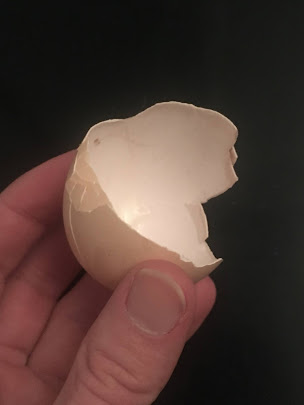

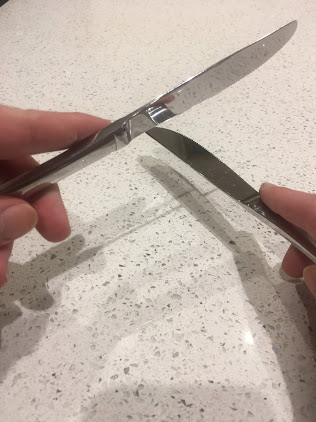










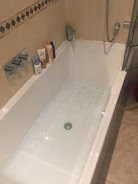



























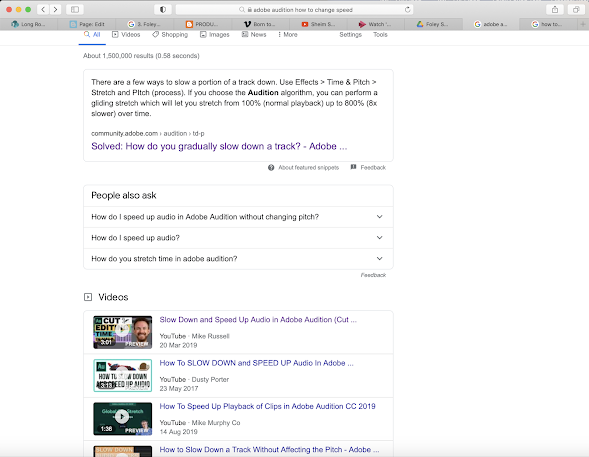






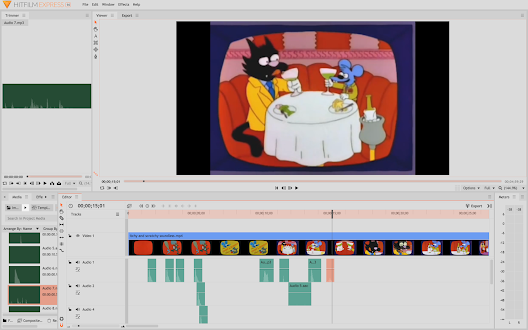

Comments
Post a Comment